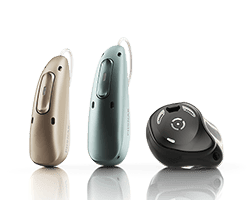
Choosing the right hearing aid is important for individuals experiencing hearing loss. Rechargeable and battery-operated hearing aids are the two main options available. Understanding their differences can help in making an informed decision.
Benefits of Rechargeable Hearing Aids
Rechargeable hearing aids offer convenience and ease of use. Users don’t need to handle small batteries frequently, making them a practical choice for people with dexterity issues. Additionally, these aids usually come with a charging station, making it easy to charge them and ensuring they’re always ready to use.
Another advantage is cost savings over time. While the initial cost may be higher, there are no ongoing expenses for disposable batteries. This feature is particularly appealing to those looking for a long-term solution.
Drawbacks of Rechargeable Hearing Aids
However, rechargeable hearing aids are not without drawbacks. They require regular access to a power source for recharging. During power outages, this could pose a challenge. Additionally, the time needed for charging them is time that they cannot be actively used.
Moreover, the lifespan of a rechargeable battery is limited. Over time, these batteries may degrade, requiring replacement. It’s important to consider the long-term maintenance involved.
Benefits of Battery-Operated Hearing Aids
Battery-operated hearing aids offer flexibility and reliability. Users can easily carry spare batteries and replace them as needed. This is particularly useful when traveling or in situations where charging may not be possible.
These aids generally have a longer battery life before requiring replacement. This longevity can be reassuring for those who may forget to recharge their devices. For many, the peace of mind that comes with knowing extra batteries are readily available is invaluable.
Drawbacks of Battery-Operated Hearing Aids
On the downside, managing disposable batteries can be cumbersome, and regularly purchasing new batteries can add up in cost. Additionally, individuals with dexterity issues might find it challenging to frequently change them.
There is also the environmental impact to consider. Disposing of used batteries contributes to waste, which can be concerning for those mindful of sustainability. This factor can influence the decision-making process for environmentally conscious users.
Battery Life Comparison
When comparing battery life, rechargeable hearing aids typically last a full day on a single charge. They are charged overnight and are ready to use by morning. This daily routine becomes a straightforward habit for users.
Battery-operated hearing aids can last anywhere from five to fourteen days, depending on usage. This extended life means fewer interruptions for battery changes. Choosing between the two will depend on individual preferences and lifestyle needs.
Selecting the Right Option
Selecting the right type of hearing aid is a personal decision based on lifestyle and convenience. Those who value the convenience of not changing batteries and have regular access to electricity may prefer rechargeable hearing aids. Alternatively, individuals who travel frequently or like the security of having spare batteries might opt for battery-operated models.
Both types of hearing aids have their unique benefits and limitations. By considering factors such as cost, environmental impact, and ease of use, individuals can make an informed choice. This decision ultimately enhances their quality of life and ensures better hearing health.
